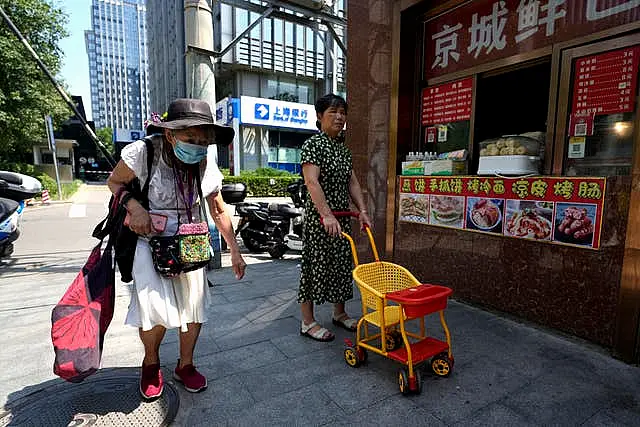China’s economy grew at a 6.3 per cent annual pace in the April to June quarter – much slower than analysts had forecast given the pace of growth the year before.
Quarterly growth, the usual measure for other major economies, was 0.8 per cent, according to government data released on Monday – in line with expectations but down sharply from the 2.2 per cent seen in January to June.
The world’s second-largest economy is expected to slow further in the coming months given weaker demand for Chinese exports in other economies as their post-pandemic recoveries lose momentum.
The 6.3 per cent growth in China’s gross domestic product (GDP) from April to June outpaced a 4.5 per cent expansion in the previous quarter.
The still robust growth is largely due to the economy growing just 0.4 per cent a year earlier in April-June of 2022 amid strict lockdowns in Shanghai and other cities during Covid-19 outbreaks.

Analysts had forecasted growth for the quarter that ended in June would exceed 7 per cent. National Bureau of Statistics spokesman Fu Linghui said at a news conference on Monday that China is still shaking off the impact of the pandemic.
But he maintained that China can still meet the growth target for the year of about 5 per cent.
Analysts are far less optimistic.
The numbers are a “worrying result” for China’s economy, which has been struggling to gain momentum, said Moody’s Analytics economist Harry Murphy Cruise.
“China’s recovery is going from bad to worse,” he said. “After a sugar injection in the opening months of 2023, the pandemic hangover is plaguing China’s recovery.”
Government spending is likely to help key industries like real estate and construction, but will not be a “silver bullet”, he added.

Apart from more government spending, regulators can cut interest rates, Marcella Chow, global market strategist at JP Morgan Asset Management wrote in a report.
“The weak economic readings suggest an urgency in escalating policy support so as to stabilize expectations,” Ms Chow said.
China’s GDP in the first quarter beat expectations, growing by 4.5 per cent as consumers flocked to shopping malls and restaurants after nearly three years of “zero-Covid” restrictions were removed in late 2022.
The government’s growth target of “around 5 per cent” was seen as a conservative goal. It can only be met if the economy maintains close to its current level of growth.
Data released earlier showed exports declined 12.4 per cent in June from a year earlier as global demand faltered after central banks in US and Europe raised interest rates to curb inflation.

Retail sales, an indicator of consumer demand, in June rose 3.1 per cent from the same period in 2022. That is seen as a strong point, but not strong enough, analysts said.
Industrial output, which measures activity in the manufacturing, mining and utilities sectors, beat analyst’s expectations, rising by 4.4 per cent in June compared to the same month a year earlier.
China’s policymakers are not having to fight inflation, but may end up having to contend with its opposite, deflation, or falling prices due to weak demand.
In recent months, authorities have tried to spur lending and spending, with mixed success.
Fixed-asset investment – spending on infrastructure and other projects to drive growth – rose by a still tepid 3.8 per cent for the first half of 2023 compared to the same period of 2022.







